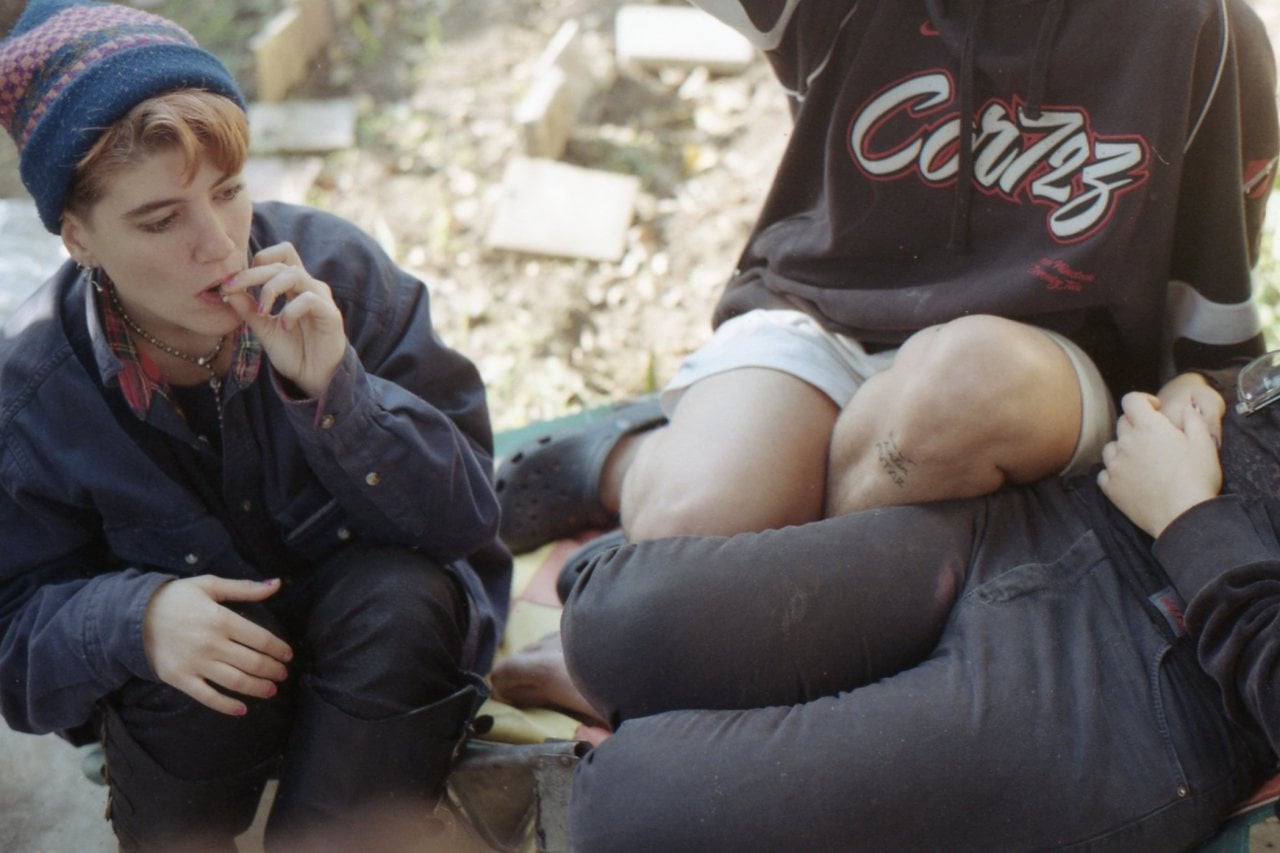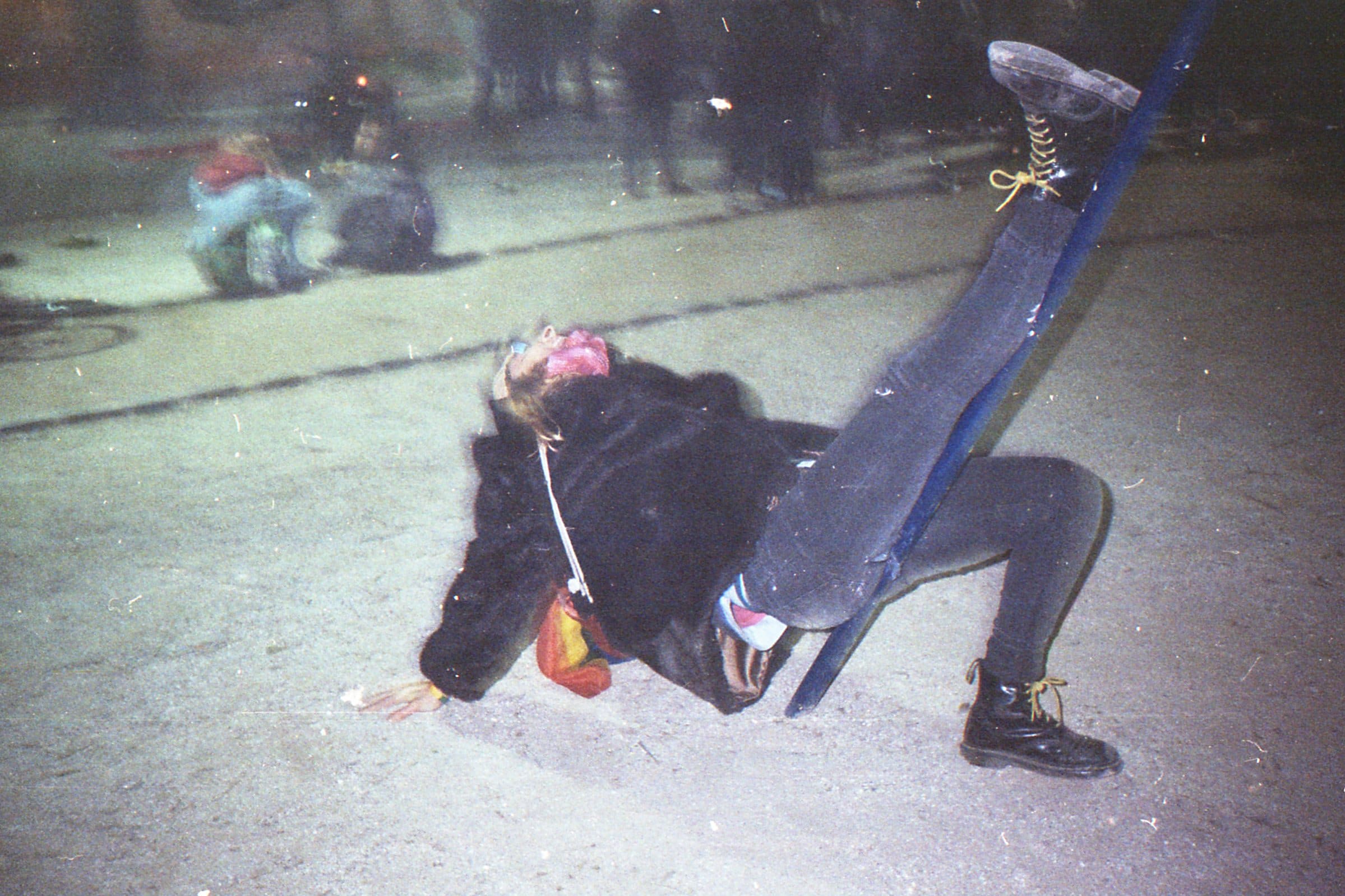
Peripheral bodies
The Argentine photographer Immensidades works without models: she takes portraits of her friends as part of a quest to make visible what heteronormativity rejects, but also to record what happens to her on a daily basis. Today is the day of lesbian visibility in Argentina in commemoration of the death of Pepa Gaitan, murdered by lesbophobia in Cordoba almost ten years ago.
By Marcela Vallejo
The work of the Argentine visual artist Immensidades is traversed by a series of words: territory, refuge, deep, love, sensuality, activism, micropolitics, desire, fat corporealities, and trans bodies. The key to these words has been changing with time and experience. Her life is changeable. However, perhaps the keywords that remain have to do with the way she sees the world, the place from where she positions herself.
Immensidades grew up in the Buenos Aires suburbs, in a suburban neighborhood. At first, she recalls, she shared spaces with friends from the neighborhood listening to cumbia, then she met other groups, and life was more marked by punk. Photography began to be part of her life at a very young age when her older sister gave her an analog camera. Her family could not afford it, but she insisted.
From that moment on, she started something that marks the work of Immensidades: she portrays her life, what surrounds her, what she finds important, and what she desires. “I am not a photographer looking for models. I don’t say, ‘I want to portray a trans guy, a trans girl, a fat person, a brown person, or a queer person.’ My work is more implied by who my friends are, and suddenly there are millions of photos of the same person and millions of others.” The people we see in the Immensities work are people close to her, who are part of her life.

Life has been changing, and so have the circles in which she moves. Immensidades is known in Argentina for fat and queer activism. To define what queer is, she mentions territory, travel, and corporeality. “The translation itself of queer is a monstrosity or the monstrous. I feel that my locality is so polyphonic and also bodily diverse that there is something about the word queer that it encompasses. It also has to do with something individual territorial of each space, with situations of the territory. It is not the same in the suburbs as in the Federal Capital”.
In the case of queer people living in the periphery, for example, a trip is always implied. But also other conditions of being able to be: Immensidades has friends, for example, who decided not to transition in the neighborhoods where they grew up or who do not express their sexual and gender identities calmly in those spaces for fear of suffering violence.
“The simplest thing would be to say that these are people who identify themselves, are, feel or live their sexuality one way, their way of life one way and group together to survive above normativity.” Therefore, perhaps what she portrays most are “individualities grouping together as a collective.”

“The simplest thing would be to say that these are people who identify themselves, are, feel or live their sexuality one way, their way of life one way and group together to survive above normativity.” Therefore, perhaps what she portrays most are “individualities grouping together as a collective.”
Many of her images are records of queer activists, fat women, and feminists. Like many other women, Immensidades actively participated in the feminist tide that began in 2015, but from more underground places. The images she has made are declarations of existence that demand visibility and express intentions of being and being in the world, all from a micro perspective, bounded, small, and from the periphery.
That has led her down the paths of self-publishing and self-publishing since many of the things she has managed to do and she has done under precarious conditions. “I feel that it is not an impediment: if someone does not make me visible, then I make myself visible. I’m left with a kind of punky mania for occupying spaces.” And she hasn’t done it alone: she has a publishing house called Profundo, where Inmensidades self-publishes but also publishes the work of other artists like herself. At Profundo, they publish fanzines, poetry books, and photobooks. Immensidades, for example, has had three editions of her fanzine Hortensias para desayunar since 2016, with texts in different formats in which she tells bits and pieces of her life, reflections of the moment, and ideas she is developing.
The latest edition of Hortensias will accompany the exhibition La Disolución, which the artist will open this Thursday, March 9, at Sala Peluche. Now, like other people in Argentina, Immensidades is living in a period she calls “dissolution.” The photos that make up this exhibition are more reflective, with a look directed more inward, and paradoxically, they move away from the search for identity that has characterized her work.
“What I try to show with The La disolución is what happens more inside our individualities in the collective, so suddenly they are more contemplative images and with greater opacities. This time I also want to give more place to the image.”




